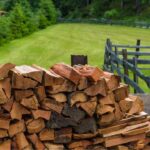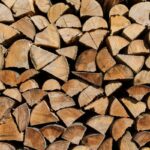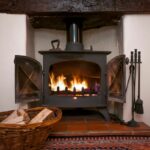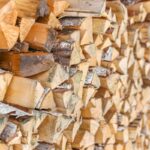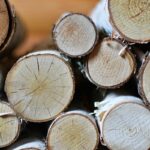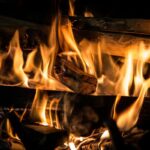Locust is a hardwood found in many parts of the world and is known for being dense, hard, and heavy.
Often used as firewood, many still wonder if this means it is good firewood. Generally speaking, locust is an ideal choice for home log burners or wood burning stoves.
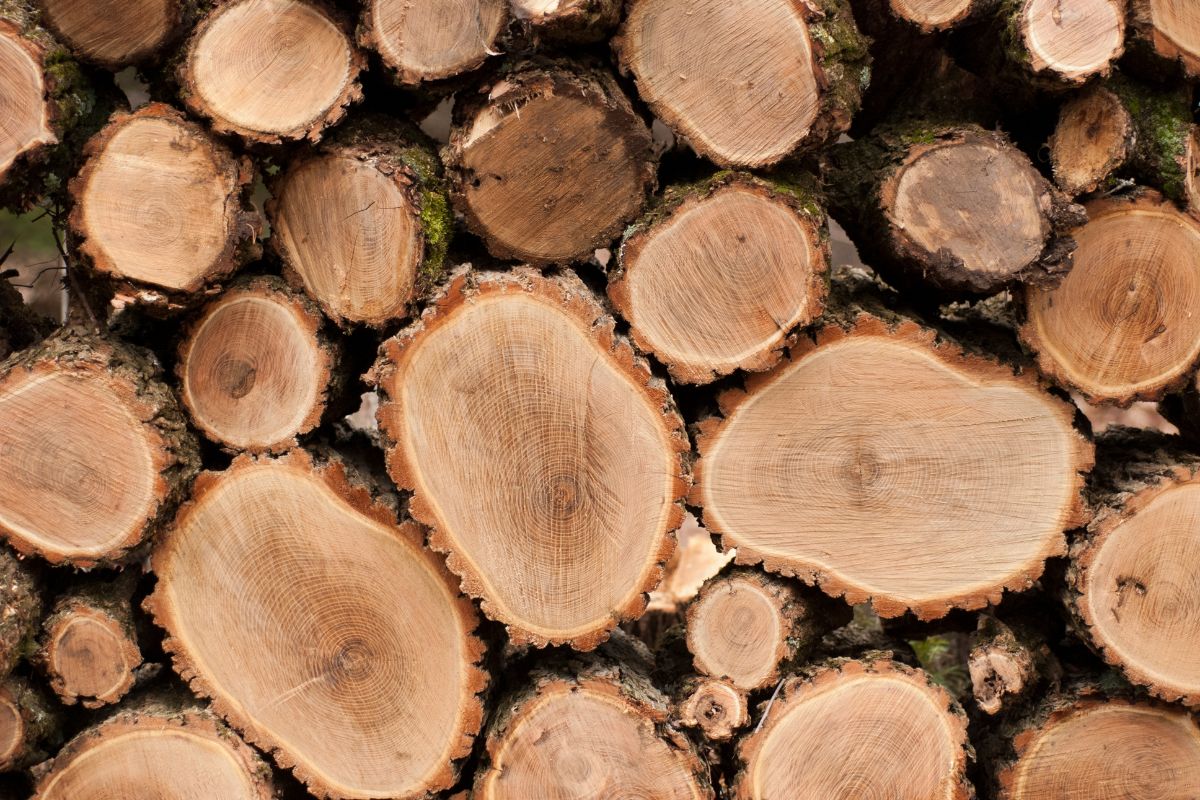
Because locust wood is so dense (it is actually one of the densest in the world), it burns hot and slow. This makes it a popular choice amongst homeowners and outdoor enthusiasts who use the wood for heating and cooking.
Today, we are going to find out more about locust wood and its burning qualities.
We will explore its heat output, how smoky it is, and much more, so you can decide whether you want to use it for your fire or not.
Locust Wood Characteristics
Locust wood belongs to deciduous, fast-growing trees that are native to North America. The trees are known for their robust, durable wood, and their very thick roots that make them resistant to erosion and drought.
The largest locust trees can grow up to 100 feet tall, with trunks measuring up to four feet in diameter. The wood from the trees is dense and hard, making it a perfect choice for firewood.
When burned, locust wood has a pretty high heat output. It also burns slowly, so many homeowners prefer locust woods to others to heat their homes.
Locust wood is not only used as firewood, however. It is also made into furniture, fence posts, and railroad ties. This is due to its supreme strength and its resistance to rot.
As we touched upon above, locust trees are also fast-growing. Therefore, they are considered a sustainable source of wood, as you can cut down a tree and plant another in its place to grow quickly.
Is Locust Good For Firewood?
Locust wood is known for its excellent burning qualities, which makes it a popular choice for home fires and campers worldwide.
Because the wood is so dense and heavy, it burns hotter and longer than many other types of firewood. Take Black Locust, for instance. This has an astonishing BTU rating of nearly 30.
This means its heat output is higher than many preferred hardwoods, such as oak and pine.
Locust wood also produces a bright, lively flame. This can make for an attractive and enjoyable fire.
Heat Output
Altogether, there are a number of locust trees in the world, with some having a higher BTU than others. But, there are numerous factors that affect the heat production of locust wood.
Firstly, the type of tree the wood is from is a key factor. Locust trees are generally dense and hard. Therefore, they produce more heat and have higher BTUs than softer woods.
Another factor is how the wood is cut and seasoned. If large pieces are cut off a tree, these will burn more evenly and slowly.
When cut into smaller pieces, locust firewood will burn more quickly but with a less consistent heat output.
The wood needs to be seasoned properly, as well. When you season firewood, it removes moisture from within, making it easier to ignite and burn.
In turn, this results in greater heat and higher BTUs compared to unseasoned wood.
When it comes to the locust trees with the highest BTU ratings, black locusts are the undeniable leaders. These are amongst the highest-rated BTU trees in the world, with average BTUs of 27.5 to 29.8.
However, these ratings can depend on the conditions in which the tree grew.
Honey locusts, another type of locust tree, have a lower BTU of 26.7, but still higher than the majority of trees. No matter the type of locust tree, locust firewood is generally an excellent choice for reliable, long-lasting heat.
Splitting
Although locust wood has many advantages as firewood, it does have some drawbacks. For one, it can be difficult to split and cut, due to its density and hardness.
If you do not have access to power tools, such as chainsaws, and other equipment, locust wood can be very challenging to work with.
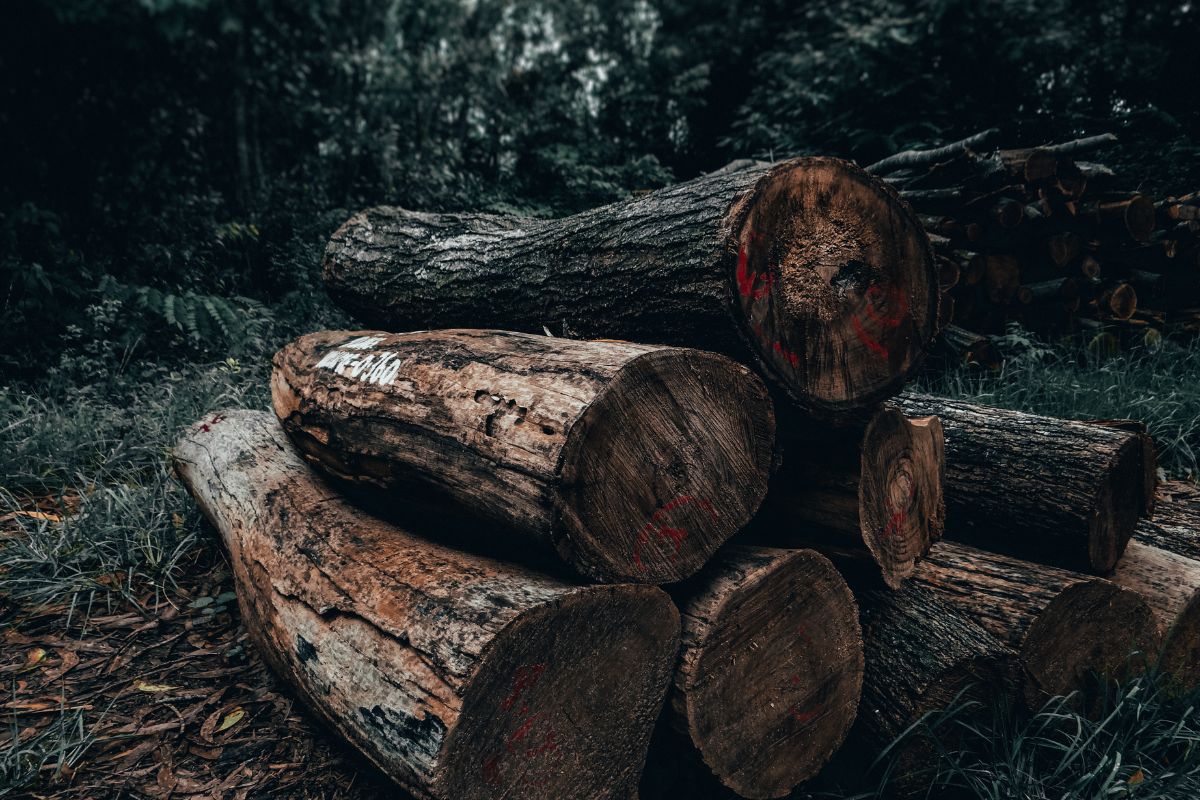
Availability
Locust trees are also not as common as some other types of hardwood trees, like oak and hickory. This can make the wood harder to find and, spending on your area, more expensive to purchase.
However, for those who are willing to put in the effort to acquire and prepare it, locust can be an excellent choice for firewood.
Smoke
How much smoke locust firewood produces typically depends on a variety of factors, such as the way in which it is burned and the type of locust wood you use.
Locust wood does not contain as much tar as many other woods, which makes it burn cleaner.
Therefore, locust wood is generally recommended for smokers and areas where smoke may be a concern.
For instance, if you suffer from respiratory conditions, the low smoke production from locust is deemed a safer choice.
unseasoned locust firewood will produce more smoke compared to seasoned wood, but still little amounts compared to woods like hickory.
Sparks
Locust wood produces some sparks when burned due to its denseness. This allows the wood to burn hotter and slower, causing embers to break from the wood and rise into the air.
The resin within locust wood can also contribute to the sparks, but if you want to, you can control the sparking.
For example, you could soak your wood in water for an hour or so before burning it to reduce the amount of resin. This will make it easier to burn, too.
You should also ensure your fireplace is free of debris and clean before burning any wood to reduce sparking.
We also recommend placing a metal fire screen in front of your fireplace when burning locust wood to contain any sparks from escaping.
In Summary
Locust is considered an excellent choice of firewood due to its slow and hot burning qualities. Compared to other popular types of firewood like oak, hickory, and maple, locust is right up there as one of the best.
- How To Open Chimney Flue - July 20, 2023
- Do Electric Fireplaces Use A Lot Of Electricity? - July 20, 2023
- How To Keep A Fire Going - July 20, 2023

